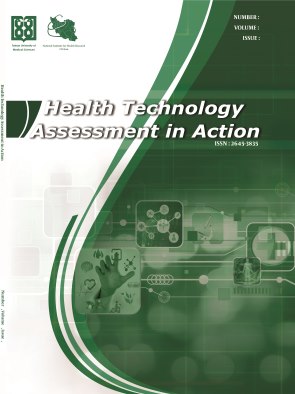Measuring the Economic Costs of Diarrheal Diseases in Nigeria: A 2021 GBD Study
Abstract
Background: This study aims to quantify the economic burden of diarrheal diseases in Nigeria considering the year 2021.
Methods: The study considered the value of life-year (VLYs) approach using the World Health Organization (WHO) and Lancet commissions’ recommendations, which assigns a monetary value to each life-year for sub-Saharan Africa. The economic burden was calculated by multiplying the GDP per capita and disability-adjusted life years (DALYs) by 4.2. The cost of illness (COI) analysis considered direct healthcare costs, non-healthcare costs, and indirect costs from morbidity and mortality. The COI values are calculated by adding the total direct medical costs (DMCs), direct non-medical costs (DNMCs), and indirect costs (morbidity and mortality). The study utilized data from the IHME Global Burden of Disease (GBD) 2021 website, the World Bank Database, and the ILO data explorer.
Results: Using the approach of the WHO, the value of life lost due to diarrheal illnesses in Nigeria in 2021 was 8.3 trillion Naira (56.7 billion US$) at one-times the GDP per capita and 24.9 trillion Naira (170 billion US$). The COI analysis revealed an economic burden of 109 billion Naira (744 million US$), with productivity loss from mortality contributing the most to the economic burden at 74%, followed by productivity losses from morbidity at 19%, with 7% attributed to direct medical and non-medical costs.
Conclusions: This study reveals a need to implement and strengthen existing actions to ensure a drastic reduction in the economic burden of diarrheal diseases. By implementing targeted interventions, preventing and controlling diarrheal disease and improving the well-being of communities in Nigeria is feasible.
2. Baral R, Nonvignon J, Debellut F, Agyemang SA, Clark A, Pecenka C. Cost of illness for childhood diarrhea in low- and middleincome countries: a systematic review of evidence and modelled estimates. BMC Public Health. 2020;20(1):619. [PubMed ID:32370763]. [PubMed Central ID:PMC7201538]. https://doi. org/10.1186/s12889-020-08595-8.
3. Institute for Health Metrics and Evaluation. GBD Compare Institute for Health Metrics and Evaluation. 2024
4. Nigeria Population Commission ICF International. Nigeria Demographic and Health Survey 2018. NPC, ICF; 2019 Available from: https://ngfrepository.org.ng:8443/handle/123456789/3145.
5. World Health Organization. Macroeconomics and health: investing in health for economic development/report of the Com-mission on Macroeconomics and Health. 2001 Available from: https://iris.who.int/handle/10665/42435.
6. Bloom D, Cafiero E, Jané-Llopis E, Abrahams-Gessel S, Bloom L, Fathima S. The Global Economic Burden of Noncommunicable Diseases Geneva; 2011 Available from: http://www3.weforum.org/ docs/WEF_Harvard_HE_GlobalEconomicBurdenNonCommunicableDiseases_2011.pdf.
7. The World Bank Group. World Bank Open Data. 2024 Available from: https://data.worldbank.org/.
8. Jamison DT, Summers LH, Alleyne G, Arrow KJ, Berkley S, Binagwaho A, et al. Global health 2035: a world converging within a generation. Lancet. 2013;382(9908):1898-955. [PubMed ID:24309475]. https://doi.org/10.1016/S0140-6736(13)62105-4.
9. Jo C. Cost-of-illness studies: concepts, scopes, and methods. Clin Mol Hepatol. 2014;20(4):327-37. [PubMed ID:25548737]. [PubMed Central ID:PMC4278062]. https://doi.org/10.3350/cmh.2014.20.4.327.
10. Salihu A, Suleiman H, Ibrahim M. Measuring cost of illness analysis of diarrhoeal diseases in north-western Nigeria. Int J Health.2017;5(1):35-9. https://doi.org/10.14419/ijh.v5i1.7158.
11. International Labour Organization. ILOSTAT Data Explorer. 2024 Available from: https://rshiny.ilo.org/dataexplorer4/.
12. Niyibitegeka F, Riewpaiboon A, Youngkong S, Thavorncharoensap M. Economic burden of childhood diarrhea in Burundi. Glob Health Res Policy. 2021;6(1):13. [PubMed ID:33845920]. [PubMed
Central ID:PMC8042854]. https://doi.org/10.1186/s41256-021-00194-3.
13. Sin MP, Hasan MZ, Forsberg BC. Change in economic burden of diarrhoea in children under-five in Bangladesh: 2007 vs. 2018. J Glob Health. 2023;13:04089. [PubMed ID:37622687]. [PubMed Central ID:PMC10451101]. https://doi.org/10.7189/jogh.13.04089
14. Hasan MZ, Mehdi GG, De Broucker G, Ahmed S, Ali MW, Martin Del Campo J, et al. The economic burden of diarrhea in children under 5 years in Bangladesh. Int J Infect Dis. 2021;107:37- 46. [PubMed ID:33864914]. [PubMed Central ID:PMC8208894].https://doi.org/10.1016/j.ijid.2021.04.038.
15. Sarker AR, Sultana M, Mahumud RA, Ali N, Huda TM, Salim Uzzaman M, et al. Economic costs of hospitalized diarrheal disease in Bangladesh: a societal perspective. Glob Health Res Policy. 2018;3:1.
[PubMed ID:29318195]. [PubMed Central ID:PMC5755417]. https://doi.org/10.1186/s41256-017-0056-5
16. Thobari JA, Sutarman, Mulyadi AWE, Watts E, Carvalho N, Debellut F, et al. Direct and indirect costs of acute diarrhea in children under five years of age in Indonesia: Health facilities and community survey. Lancet Reg Health West Pac. 2022;19:100333. [PubMed ID:35024664]. [PubMed Central ID:PMC8669319]. https://doi.org/10.1016/j.lanwpc.2021.100333.
| Files | ||
| Issue | Vol 9 No 3 (2025) | |
| Section | Articles | |
| DOI | https://doi.org/10.18502/htaa.v9i3.19638 | |
| Keywords | ||
| Diarrheal diseases Health Economics Economic Burden Public Health Nigeria | ||
| Rights and permissions | |

|
This work is licensed under a Creative Commons Attribution-NonCommercial 4.0 International License. |




